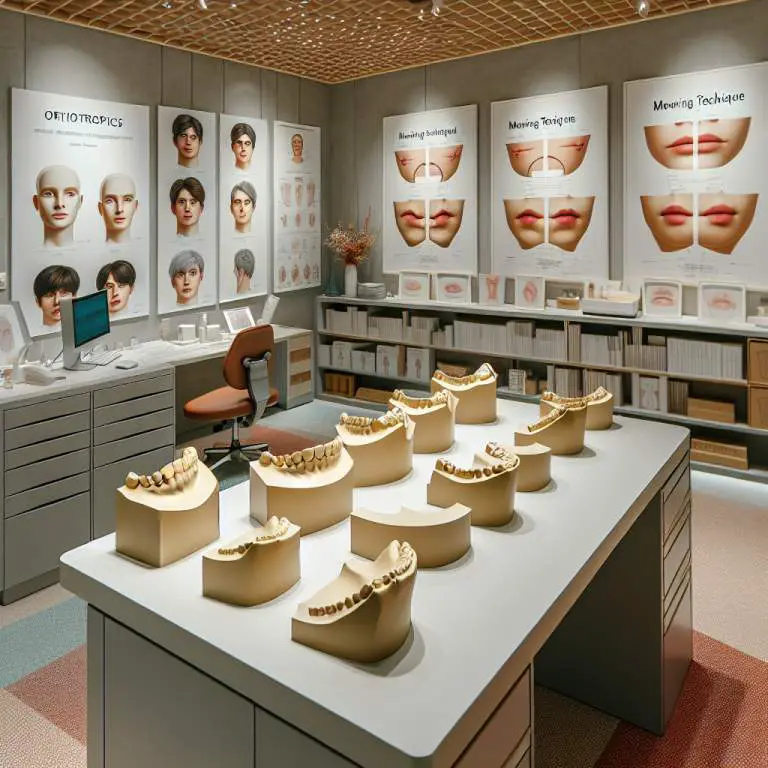What are the challenges of using mewing for jawline enhancement?
Using mewing for jawline enhancement can be challenging because it requires consistent effort and correct technique over a long period. Many people find it hard to maintain the proper tongue posture all day, which is crucial for success. Additionally, results vary greatly among individuals, and some may not see noticeable improvements, leading to frustration. Lastly, there’s a lack of scientific studies proving its effectiveness, making it difficult to follow guidelines with certainty.

How does mewing theoretically improve the jawline?
Mewing is a technique that involves placing your tongue against the roof of your mouth. This position is supposed to help shape your jawline over time. The idea is that by doing this, you’re using your muscles in a way that can make your jaw look better.
When you keep your tongue in this special spot, it’s like giving your jaw a mini workout. Just like lifting weights can make your muscles bigger, mewing might help make your jawline sharper. It’s all about using those muscles in a new way.
What are common mistakes people make when starting mewing?
One big mistake people make when they start mewing is not putting their whole tongue on the roof of their mouth. Some just use the tip of their tongue, but you need to use the whole thing to possibly see changes. It’s like trying to lift something heavy with just one finger instead of your whole hand.
Another mistake is forgetting to do it regularly. Mewing isn’t something that works if you only remember to do it once in a while. It’s more like brushing your teeth; you need to do it every day for it to possibly work.
Can everyone achieve noticeable results with mewing?
Not everyone will see big changes from mewing. Just like how some people can run really fast and others can’t, our bodies respond differently to things. For some, their jawline might start looking different after doing mewing for a while. But for others, there might not be much change at all.
It also depends on how old you are and other things about your body. Younger people might notice more changes because their bodies are still growing and changing. But even if you don’t see huge results, it doesn’t mean you’re doing anything wrong.
How long does it typically take to see changes in the jawline from mewing?
Seeing changes from mewing doesn’t happen overnight. It’s more like watching grass grow; it takes patience and time. For some people, they might start seeing small differences in a few months, but for others, it could take longer.
The key is consistency and keeping up with it every day. Think of it as a long journey rather than a quick trip. And remember, everyone’s journey is going to be different based on lots of factors like age and how well they stick with the technique.
| Obstacle | Description | Solutions |
|---|---|---|
| Inconsistent Practice | Not maintaining the correct tongue posture consistently. | Set reminders; practice mindfulness and habit-building techniques. |
| Incorrect Technique | Applying the technique incorrectly, which can lead to ineffective results or discomfort. | Consult with an orthodontist or a myofunctional therapist for guidance. |
| Lack of Patience | Expecting immediate results; mewing requires time to see changes. | Maintain realistic expectations and focus on gradual improvement. |
| Anatomical Limitations | Natural jaw structure and genetic factors may limit the extent of possible changes. | Acknowledge limitations; consider professional advice for alternative methods if necessary. |
| Misinformation | Relying on incorrect or misleading information about mewing practices. | Seek information from credible sources and professionals in the field. |
| Dental Health Issues | Prior dental health issues can interfere with proper mewing technique. | Consult a dentist to address any pre-existing dental health concerns before starting. |
What are the potential side effects or risks of incorrect mewing techniques?
Incorrect mewing techniques can lead to several problems. One common issue is jaw pain. This happens when people push their tongue too hard against their palate. It can also cause headaches and discomfort around the face.
Another risk is developing an uneven jawline or dental issues. If the tongue applies pressure more on one side, it might lead to asymmetry. Misalignment of teeth is another concern if mewing is not done correctly.
Is there scientific evidence supporting the effectiveness of mewing for jawline enhancement?
The scientific community has not widely studied mewing. There are limited research papers and clinical studies that directly link mewing to significant jawline enhancement. Most of the evidence supporting mewing comes from anecdotal reports and personal testimonials.
However, some related studies on orthotropics (a broader field that includes principles similar to mewing) suggest potential benefits in facial structure changes over time. But these studies often emphasize long-term practice and early start – during childhood or adolescence.
How can one ensure they are practicing mewing correctly to avoid challenges?
To practice mewing correctly, it’s important to understand its basic principles. The tongue should rest entirely on the roof of the mouth, not just the tip. The lips should be together, and breathing should be through the nose. Starting with these basics can help avoid common mistakes.
Seeking advice from professionals like orthodontists or speech therapists who are familiar with myofunctional therapy can also be beneficial. They can provide personalized guidance and feedback to ensure you’re applying the technique properly without causing harm.
Final Thoughts
Mewing presents an interesting approach to potentially enhancing one’s jawline through non-surgical means. However, it’s crucial to approach it with caution due to the lack of extensive scientific backing and possible risks if performed incorrectly.
If you’re considering trying mewing, doing thorough research and possibly consulting with a professional can help mitigate risks. Remember, results may vary greatly among individuals, and patience is key as changes can take time to manifest.







